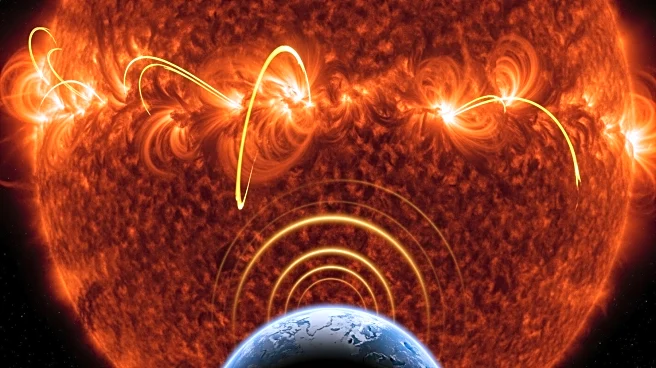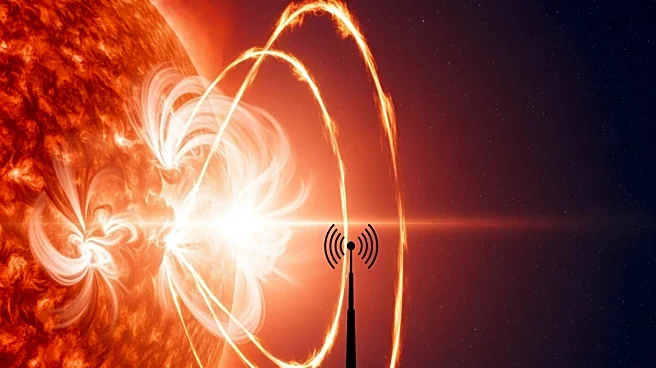What's Happening?
On November 14, the sun emitted a powerful X4-class solar flare, causing significant radio blackouts on Earth. This event, originating from sunspot AR4274, was the second-most intense solar flare of 2025.
The flare reached its peak at 3:30 am EST, leading to an R3-level radio blackout, particularly affecting central and eastern Africa. A coronal mass ejection (CME) accompanied the flare, but due to the sunspot's position, a direct impact on Earth is unlikely. Solar flares are categorized by intensity, with X-class being the most powerful, and this event underscores the sun's active behavior.
Why It's Important?
The occurrence of an X4-class solar flare highlights the sun's potential to disrupt global communications and technology. Radio blackouts can affect aviation, maritime operations, and emergency services, emphasizing the need for robust communication infrastructure. The flare's impact on Earth's ionosphere can also influence GPS systems and satellite operations. Understanding solar activity is crucial for preparing and mitigating such disruptions, which can have widespread implications for industries reliant on communication technologies.
What's Next?
Space weather experts are analyzing data to assess the potential impact of the accompanying CME. While a direct hit is unlikely, minor effects could still be felt in the coming days. Monitoring solar activity remains essential for predicting future flares and preparing for possible disruptions. Continued research and investment in space weather forecasting can help mitigate risks associated with solar events, ensuring the resilience of communication networks and technology systems.












